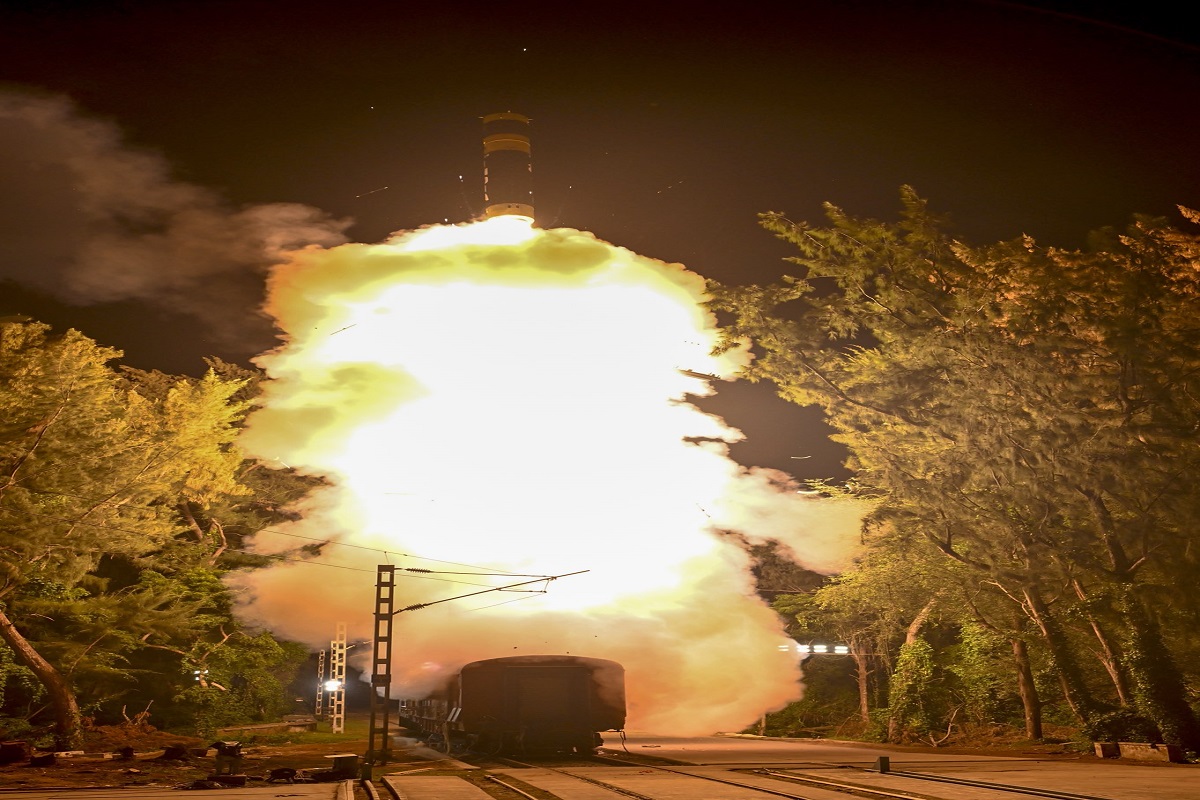Agni-Prime missile test from train for the first time in India: Special train made

India tested the Agni-Prime missile late Wednesday night using a rail-mounted mobile launcher system. It was launched using a canisterized launching system, a specially designed train capable of reaching any corner of the country with a rail line.
Defense Minister Rajnath Singh announced this. The test was conducted at the Chandipur Integrated Test Range in Odisha. This test puts India among a select group of countries that possess a canisterized launching system capable of launching missiles from rail networks.
Russia, China, and North Korea have previously tested mobile rail launchers. The United States is also included in this list, but has never confirmed its presence. The Agni-Prime missile is designed to have a range of up to 2,000 kilometers and is equipped with advanced features.
Why is this missile test significant for India?
This missile test is considered extremely important for India because, during any war, the army needs a rail line leading to the launching point. Some missiles were difficult to move due to their weight. This scenario will now change.
This also means that the army can hide its missiles in railway tunnels to protect them from enemy sight. The Defense Minister also wrote that this rail-based mobile launcher can launch missiles in a short time, even from dark and foggy areas.
With 70,000 kilometers of rail lines, Indian Railways is the fourth largest network in the world. Kanyakumari in the south, Baramulla in the north, Sairang in the east, and Okha in the west are the most remote railway stations in the country. This means that rail connectivity is available even here.
What is a Canisterized Launch System?
This is a modern missile launching technology. In this system, the missile is placed in a sturdy canister (a large metal container). This canister protects the missile and makes it easily transportable and ready for launch.
The missile can be fired directly from the canister without lengthy preparation. The missile remains protected against moisture, dust, weather, and other adverse conditions. The missile can be transported anywhere by placing it in a canister on a truck, rail, or mobile launcher.
It is difficult for the enemy to identify which canister carries a missile and which does not. Being packed in a canister eliminates the need for frequent maintenance.

These countries have conducted rail-based missile tests so far.
Russia's Molodets: In the 1980s, the former Soviet Union launched the RT-23 Molodets from special trains. The Molodets could also carry nuclear weapons. Russia also planned to revive it with the Barguzin system, but shelved the project to focus on hypersonic missile development.
China's DF-4: In December 2016, China tested a new rail-mobile version of its ballistic missile DF-41 (CSS-X-20). The Chinese Rocket Force is working on such mobile options.
North Korea: Korea's Korean Central News Agency reported on a rail missile system on September 16, 2021. The missile traveled a distance of 800 kilometers before striking.
United States: Studies on a rail-based system for its Minuteman missiles began in the 1950s. They abandoned it in 1961. Japan and South Korea have also tested missile launches via rail.


1.png)


.png)


.png)



